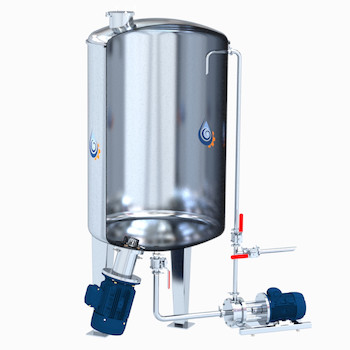Innovative and affordable mixing solutions-Pioneering Efficiency for Seamless Solutions

Begin by preparing the polymer material in a suitable form, whether it is in powder or pellet form. Ensure that other ingredients or solvents required for the process are also prepared.
The disintegration process can be adjusted based on the specific polymer type, desired particle size, and the intended application.
Monitoring and control of process parameters are critical for achieving consistent results and maintaining product quality.
The choice of homogenizers and process tanks should align with the characteristics of the polymer and the specific requirements of the manufacturing process.
This integrated approach using both a bottom homogenizer and an inline homogenizer ensures effective polymer disintegration, resulting in a finely dispersed and homogeneous polymer product suitable for various industrial applications.